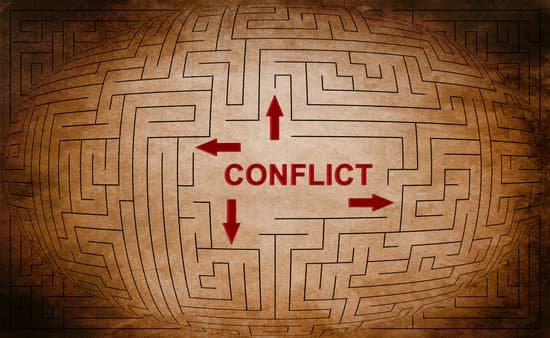To say that 2020 has been a year of crisis is an understatement.
First, the world was rocked by COVID-19. More recently, our country has reeled over the brutal and senseless deaths of black Americans including Ahmaud Arbery, Breonna Taylor, and George Floyd. These point to longstanding, race-related animosities simmering under the surface of our country. Our national tragedy has sparked global outrage.
I personally cannot remember a time when tensions were running so high. And at the same time, many of us are running low on the mental and emotional resources needed to cool our emotions and help us handle the strain.
At a time when the world feels full of lit matches, many of us feel tinder dry.
I didn’t plan for this series — how to diffuse conflict during crisis — to coincide so closely to current events. The timing was, if I’m being completely honest, a fluke. So I hope no one will read motives into my writing that I never intended. I certainly don’t intend to offer simple solutions to astoundingly difficult problems.

Illustration by Canva
My only goal is to offer a research-based framework that may help us navigate these tense times. In their excellent book, Anger Management for Everyone, clinical psychologists Chip Tafrate and Howard Kassinove encourage us to:
- Be aware of your triggers.
- Know how to cool yourself down.
- Examine your beliefs.
- Talk it out.
In part one, we talked about the first three steps, including beliefs that lead to anger. Please don’t get me wrong — I’m not saying that all anger is bad. Anger can sometimes be a useful tool for change. As Mahatma Gandhi’s grandson wrote:
Anger to people is like gas to the automobile – it fuels you to move forward and get to a better place. Without it, we would not be motivated to rise to a challenge. It is an energy that compels us to define what is just and unjust.” Arun Gandhi, The Gift of Anger
But we want to avoid feeding the type of anger that arises from misunderstandings or miscommunication with others. Such anger can’t help us in a crisis — it can only make things worse.
Let’s move on to the last step: talking things out.
Imagine that you are put in charge of a meeting on a sensitive topic. You know everyone will be on edge. So, setting the right tone will be crucial. If you do, you will successfully lead your team through a difficult crisis. Setting the wrong tone, however, will likely detonate a few bombs and may destroy the team altogether.

Illustration by Canva
Relationship research has identified four communication styles that will definitely set the wrong tone, and what to do instead. Let’s review them:
What NOT to do in conflict: Don’t CRITICIZE.
It’s one thing to voice a legitimate complaint or concern in a conflict. It’s quite another to attack, name-call, criticize, and blast someone’s character or personality at its core.
Let’s not pretend not to know the difference. Expressing a concern like, “It upsets me when you make certain comments in our office,” is not the same as verbal sniping like, “Why do you always have to be such an arrogant, stupid jerk? I can’t believe no one’s fired you yet.”
The difference is not subtle, and it’s not meant to be.
Communication and relationship experts John and Julie Gottman have identified at least three hallmarks of criticism to watch for. The first is using terms like “always” or “never.” The second is the ubiquitous “you” focus – “YOU” are the problem, “YOU” are the source of all my stress, I would be much better off if “YOU” would just clean up your act. The implicit message is, “I” am NOT the problem, and “I” am better than you. The third is turning a behavior into a global personality flaw, like being a jerk.
The alternative to criticism is to make a gentle start. Specifically, this means to stay focused on the current situation, express your own feelings about it through “I” messages, and ask the other to change their behavior in a gentle, respectful way. For example, “I have to be honest; I feel uncomfortable with some of the comments you have made. We may never fully agree on some things, but I hope we can continue to talk to each other in a mutually respectful way. If you can do this for me, you have my commitment that I will do the same for you.”

Illustration by Canva
What NOT to do in conflict: Don’t get DEFENSIVE.
Defensiveness is our attempt to duck and cover in a conflict. I’m not talking about expressing legitimate reasons to defend or at least explain our behavior. I’m talking about the slimy, often passive aggressive tactics we use to turn the tables and frame the other person as the bad guy.
Self-defeating defensiveness comes in at least two forms: whining (“Poor me for having to deal with big, bad you”) and counter-attacking (“Hey, who are YOU to talk? What about all the garbage YOU pull?”).
What is the healthy alternative? To accept our own share of the responsibility.
This doesn’t mean that you or I have to exonerate the other side of their share. Rather, it means that we own our part and commit to resolving the conflict. This step alone can go a long way. On the other hand, conflicts often escalate out of control due to blame-shifting, finger-pointing, counter attacks, and defensiveness.
What NOT to do in conflict: Don’t STONEWALL.
When in conflict, we often give each other cues that we are no longer interested in engaging. Examples include arm-folding, avoiding eye contact, going silent, or even walking out. To the other person, this feels like they are banging their head against a hard, stone-cold wall.
There is an old German fable about porcupines who need to huddle together for warmth, but are in danger of hurting each other with their spines. When they find the optimum distance to share each other’s warmth without putting each other’s eyes out, their state of contrived cooperation is called good manners…When you acknowledge other people politely, the signal goes out, ‘I’m here. You’re there. I’m staying here. You’re staying there. Aren’t we both glad we sorted that out?’ When people don’t acknowledge each other politely, the lesson from the porcupine fable is unmistakeable. ‘Freeze or get stabbed, mate. It’s your choice.’ -Lynne Truss
Relationship studies show that during conflict, both parties experience higher physiological arousal including a racing heartbeat, rapid and shallow breathing, high blood pressure, and clenched up muscles.
This Diffuse Physiological Arousal (DPA) has a serious side effect: It hampers our mental and emotional ability to solve conflict. Emotionally, we may feel overwhelmed and stretched to the breaking point. Parts of the brain involved in careful analysis and decision-making are drowned out by distress calls from the parts that evoke anxiety, fear, and anger. We develop tunnel vision and tunnel hearing, unable to process what the other person is saying.
This is why, when we fling an accusation like, “You haven’t even heard a word I’ve said!” at someone during conflict, they very likely haven’t.
The solution is to learn how to cool and calm ourselves down. This is why we talked about how to cooldown techniques in part one of this series.
If a conflict is escalating, consider asking for a time-out of at least 20 minutes, longer if needed. Use one of the self-soothing exercises to bring you back down from DPA, slowing your heart and breathing rate and increasing the amount of oxygen reaching the brain. This can be a mental and emotional imperative to conflict resolution.
One caviat: make sure the other side knows why you’re asking for a time-out and that you’re still committed to talking things through. You don’t want to give the impression that you’ve given up. Take the initiative and set up a time in the future to continue the conversation.

Illustration by Canva
What NOT to do in a conflict: Don’t use CONTEMPT.
Contempt means feeling and acting like one is better/smarter/kinder/generally superior to someone else. In his research on married couples, relationship expert John Gottman has learned that this is the the number one predictor of divorce.
It manifests in not-so-subtle ways: eye-rolling, heavy sighs, name-calling, sarcasm, patronizing explanations and put-downs. Not only will these behaviors escalate rather than resolve conflict; they will poison the relationship until it withers and dies. A contemptuous person may not necessarily be concerned with saving the relationship – rather, they are most often interested in domination and power.
There is a short-term and long-term solution to caustic contempt.
Over the short-term (say, in the middle of an argument), focus as much as possible on your own feelings instead of the other person’s. A simple trick to doing this is to use “I” messages instead of “you” messages: “I felt embarrassed when you pointed out my mistake in front of others today. It would mean a lot to me if you could do that in private from now on.”
Over the long term, focus on creating a culture of appreciation and mutual respect. Gottman’s research has shown this is invaluable in personal relationships like marriage and parenting, but I would posit that it’s also important in professional relationships.
It’s worth asking, “How am I showing my colleagues that I appreciate and respect them? How might I do this better in the future?”
Over the past few weeks, I’ve found myself thinking about the following words of Vera Nazarian. She’s not an executive coach, but still, she makes an excellent point that I’d like to leave with you:
Love is made up of three unconditional properties in equal measure: 1. Acceptance, 2. Understanding, 3. Appreciation. Remove any one of the three and the triangle falls apart. Which, by the way, is something highly inadvisable. Think about it — do you really want to live in a world of only two dimensions? So, for the love of a triangle, please keep love whole.”

